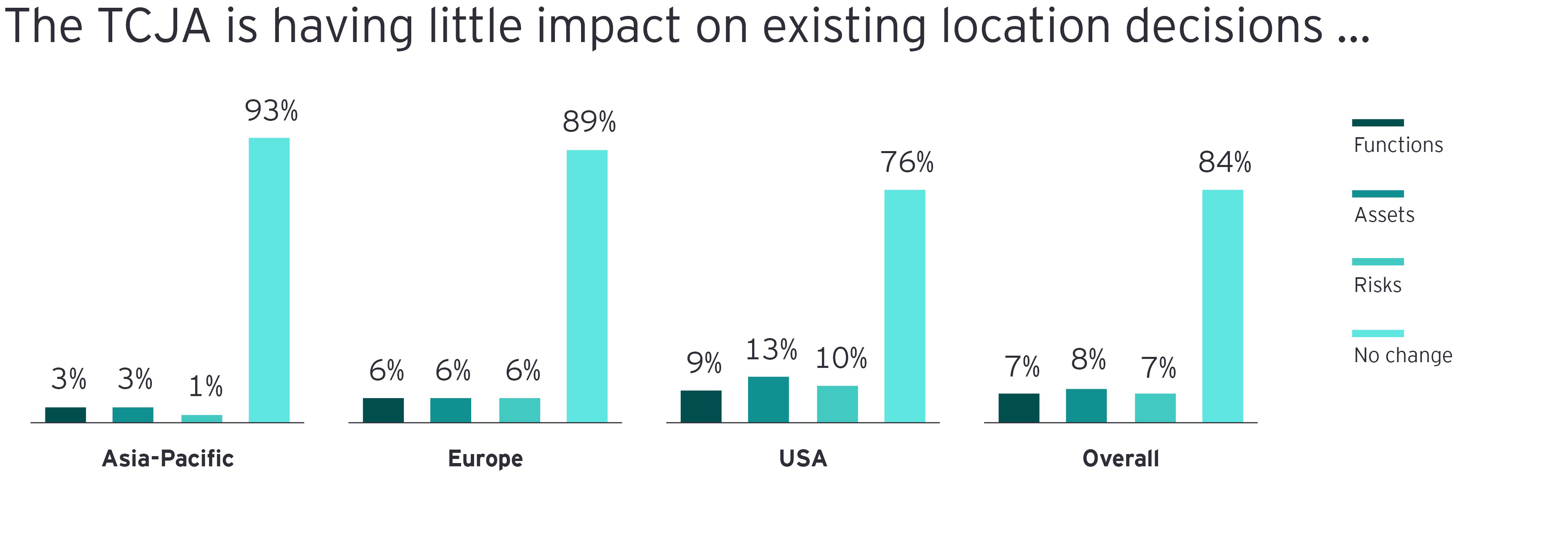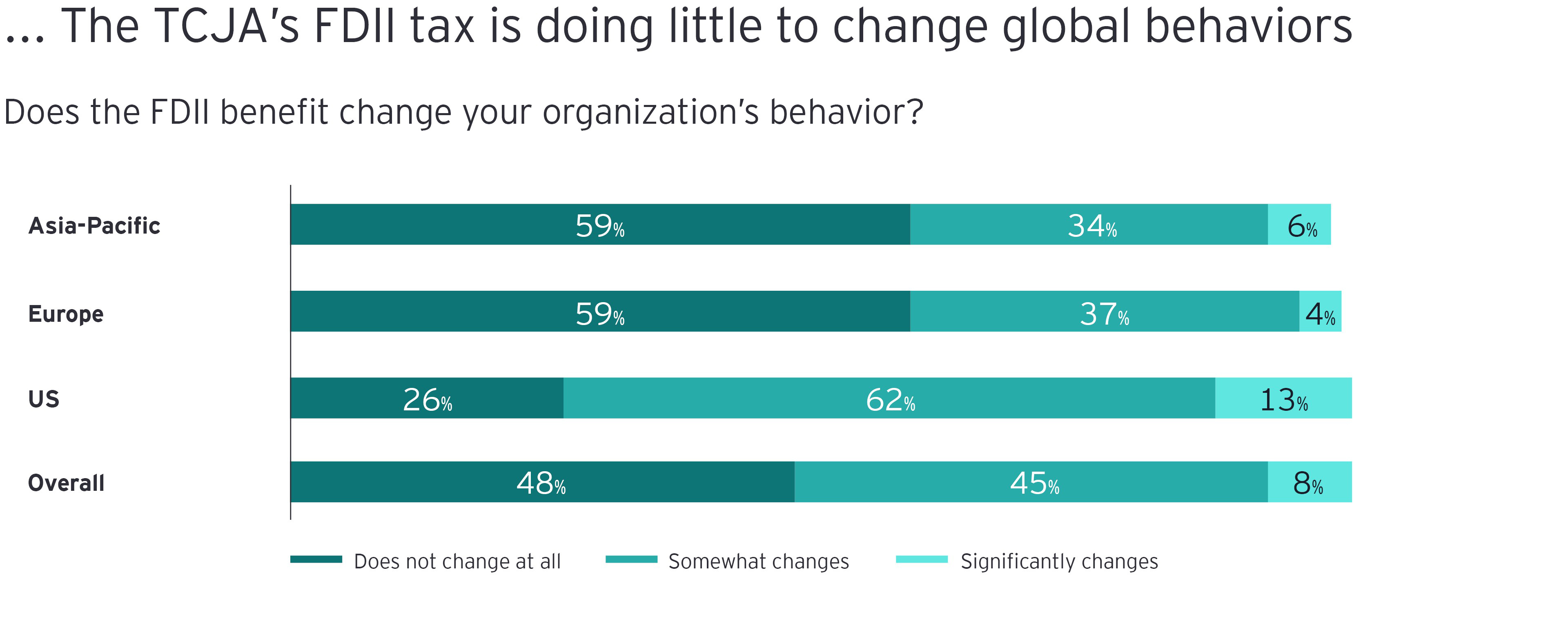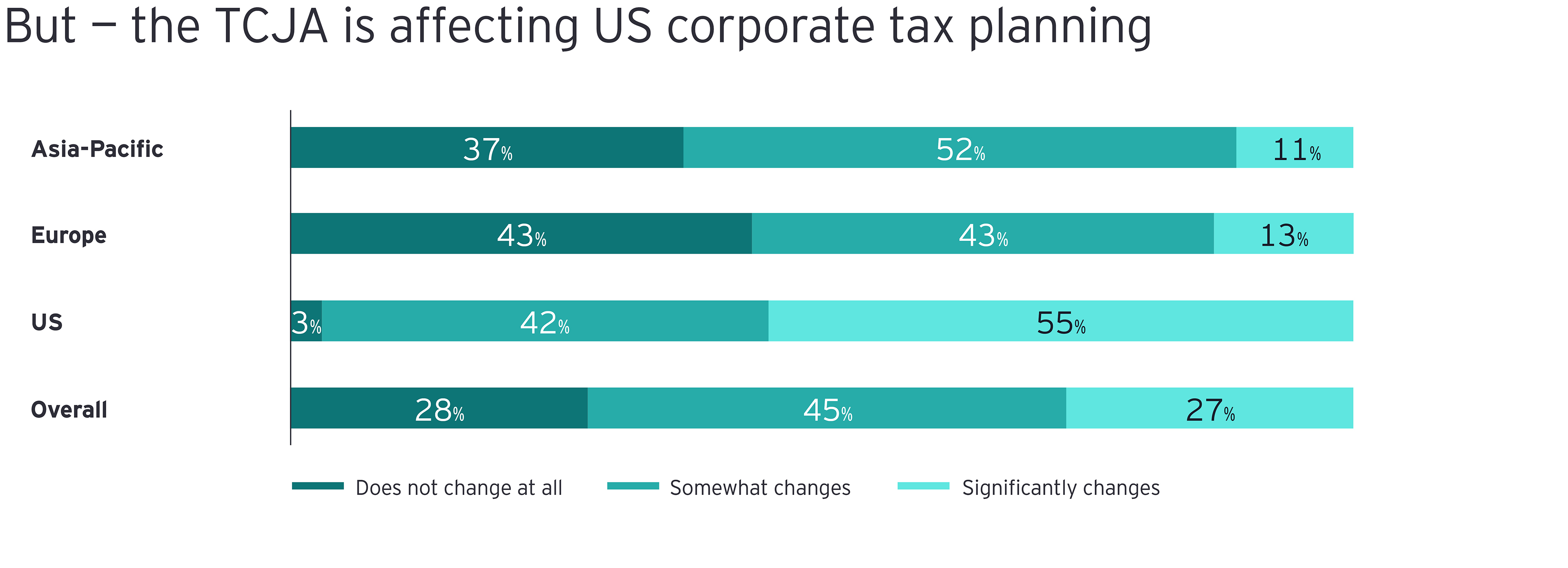Sweeping tax reform is a global phenomenon — profound changes are occurring not only in tax rates, but at even more fundamental levels.
This article is part of our Transfer Pricing and International Tax Survey report 2019. Since 1995, we have taken the pulse of global transfer pricing every two to three years by collecting and analyzing details on attitudes and experiences across a wide spectrum of taxpayers.
This installment of the 2019 Transfer Pricing and International Tax Survey: how profound change, transparency and controversy are reshaping a critical business function, zeroes in on the challenges presented by global tax reform, including not only the US Tax Cuts and Job Act (TCJA) but also initiatives such as BEPS and subsequent OECD activity.
“In the past,” says Jeff Michalak, EY Global ITTS Leader, “the way most international tax teams approached their reporting was to release the least amount of information possible, only that information that could support their case. Today, thanks to BEPS, the current OECD project and a climate of global tax reform, the paradigm has shifted. Now it’s the tax authorities who have vastly greater control of the dialogue, companies must adjust.”
Sweeping tax reform is now a worldwide phenomenon — profound changes are taking place not only in tax rates, but at even more fundamental levels impacting definitions of what can be taxed jurisdiction by jurisdiction.
Overall, says Michalak, “host nations will be extending their claims on income for tax purposes in ways that will guarantee more controversy and double taxation.” The pace and degree of change, he says, “makes it vital that businesses take a comprehensive look at the whole of their tax and transfer pricing strategies.”
Paradigm shifts
The net impact of these ongoing fundamental tax reforms results in nothing less than a handful of what Michalak calls “novel concepts” resulting in “paradigm shifts.” Some of the most significant areas include:
- Transparency: The most profound set of changes, says Michalak, are measures driving dramatically greater tax transparency. In general, “what BEPS has done is introduce vastly greater disclosure, meaning tax authorities now have far more data than ever before.”
This is significant, he continues, “because in the past, the way most international tax teams approached their reporting on an audit was to try and direct the conversation by releasing the least amount of information possible — only that information that could support their case.”
But in the age of BEPS, says Michalak, “now it’s the tax authorities who have vastly greater control of the dialogue. They have country-by-country reports, including not only your information but also information from dozens of companies in the industry in which you operate.” Plus, he explains, “they’re sharing a great deal more information with other tax administrations where the company in question conducts its business.”
- Income allocation: Nations are also passing legislation broadening their ability to claim broader swaths of income for taxation within their jurisdictions. “Nations are saying that owing to the digital economy, it’s now too easy to do business in ‘my’ country without a physical presence.” So, in response, says Michalak, “countries are changing the rules.”
For example, in 2016, the UK introduced its Diverted Profits Tax (DPT) and Australia, its Multinational Anti-Avoidance Law (MAAL). At their core, these are a means to expand jurisdiction with respect to transfer pricing with related parties in other nations. Companies faced with DPT or MAAL audits, says Michalak, “may see these countries impute profits for domestic taxation — which could be across multiple tax years.”
- New focus on intangibles: Countries in general are renewing their focus on intangibles and, in particular, seeking ways to increase their share of taxable income by reducing the ability to deduct royalties. A good example is the FDII tax, a component of the US TCJA reform. FDII incentivizes companies to maintain intellectual property (IP) in the US by offering an incentive rate of only 13.125% on intangibles-based income earned overseas.
- Global minimum tax: Yet another novel concept, again a key feature within the TCJA, is the introduction of an intangibles-focused global minimum tax. Known as Global Intangible Low Tax Income (GILTI), its purpose is to discourage companies from placing their IP in non-US, low tax jurisdictions, thus generating significant streams of low tax income. GILTI is also seen as a means of encouraging US-based and other companies to develop and maintain their IP in the US.
Closely related is the Base Erosion and Anti-abuse Tax (BEAT). BEAT targets both non-US and US companies whose revenue stems from services. That is, companies whose activities are deemed to drive reasonable profit from the US by use of interest, rents or services fees may be subject to BEAT.
Other nations may soon implement similar minimum tax provisions for intangibles. Meanwhile, the UK has already enacted something similar of its own. Known as Offshore Receipts in Respect of Intangible Property (ORIP), “this allows the HMRC [Her Majesty's Revenue and Customs] to tax a greater share of intangible income, such as royalties, where the sales take place in the UK,” says Michalak.
- The end of arm’s length: In a final example of the paradigm shift, “tax authorities, in general, are moving away from the time-honored arm’s length standard,” says Michalak. “This has been the ‘old economy’ standard for many decades,” say Michalak. But today, “within BEPS the cracks were forming — arm’s length had survived, but its role was downgraded and there was the introduction of additional methodologies.” With the current OECD project, says Michalak, “what we’re seeing is that the OECD and others are looking for completely new ways of determining what fair means in transfer pricing.” Consequently, says Michalak, “the arm’s length standard is ending and during the transition to whatever comes next, all the new formulas that will arise, there are likely to be a lot more disagreements and challenges.”
Where executives are focusing
Much of the above-noted change is only coming into focus now. Still, the survey sheds light on where executives are noticing significant change to-date.
- Fundamental transfer pricing: Overall, respondents say the greatest impacts of global tax reform will be felt in fundamental transfer pricing rules. Asked to rank the top three greatest impacts, this was the top (59%) or second (28%) choice among 87% of executives overall — albeit 94% for Asia-Pacific (64% first and 30% second).
The definition of PE was a first choice for 13% overall, or a first or second choice for 42% overall. Finally, thin capitalization rules and harmful tax practices or loss of local incentives were a first-plus-second choice at 27% and 26%, respectively.




